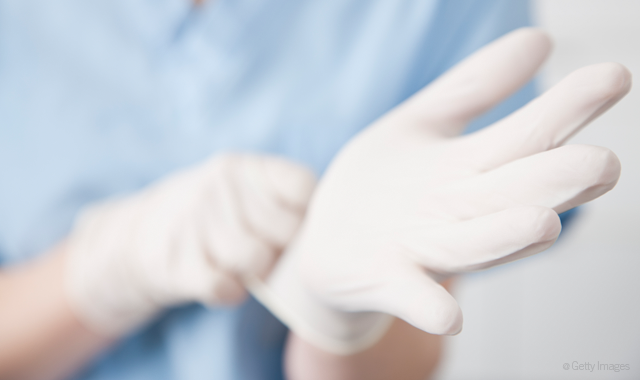5 ways to ensure your team practices good infection control
By following well-established practices, DHCP can minimize the instance of infections.

Infections are insidious and dangerous, but are also very avoidable. By following some best practices for infection control, dental healthcare personnel (DHCP) can stave off infections.
Hand hygiene
Maybe the most important practice to prevent the spread of infection is observing proper hand hygiene.
According to the Centers For Disease Control, “For routine dental examinations and nonsurgical procedures, use water and plain soap (hand washing) or antimicrobial soap (hand antisepsis) specific for health care settings or use an alcohol-based hand rub.”
While alcohol-based hand sanitizers are approved, the CDC cautions that they should be used only when the hands are not visibly soiled.
Their recommendations for performing hand hygiene include:
- When hands are visibly soiled.
- After barehanded touching of instruments, equipment, materials and other objects likely to be contaminated by blood, saliva or respiratory secretions.
- Before and after treating each patient.
- Before putting on gloves and again immediately after removing gloves.
Personal Protective Equipment
Personal Protective Equipment (PPE) is a term used for wearable equipment that is designed to protect staff from exposure to or contact with infectious agents. That is, PPE is used to protect wearers from blood, saliva or other potentially infectious materials. PPE includes gloves, facemasks, eyewear, face shields and clothing.
According to the CDC, precautions include:
- Use of gloves in situations involving possible contact with blood or body fluids, mucous membranes, non-intact skin (e.g., exposed skin that is chapped, abraded or with dermatitis) or other potentially infectious materials.
- Use of protective clothing to protect skin and clothing during procedures or activities where contact with blood or body fluids is anticipated.
- Use of mouth, nose and eye protection during procedures that are likely to generate splashes or sprays of blood or other body fluids.
Staff should also be trained to select and put on and remove appropriate PPE so that the chance of contamination is minimized.
As a reminder, the final step after removing and disposing of PPE is performing proper hand hygiene.
Cough etiquette
t’s something we all learned in kindergarten: Cover your cough.
Cough etiquette is a measure targeted less at the health care professionals and more at patients and those accompanying patients. To help those individuals avoid the spread of respiratory infections, the CDC recommends:
- Posting signs at entrances with instructions to patients with symptoms of respiratory infection to:
- Cover their mouths/noses when coughing or sneezing.
- Use and dispose of tissues.
- Perform hand hygiene after hands have been in contact with respiratory secretions.
- Providing tissues and no-touch receptacles for disposal of tissues.
- Providing resources for performing hand hygiene in or near waiting areas.
- Offering masks to coughing patients and other symptomatic persons when they enter the dental setting.
- Providing space and encouraging persons with symptoms of respiratory infections to sit as far away from others as possible. If available, facilities may wish to place these patients in a separate area while waiting for care.
Safe injection practices
Health care professionals are at risk of blood exposure and sharps injuries due to needlesticks and being cut with sharp object when handling or coming in contact with burs, needles and other sharp instruments.
“Most exposures in dentistry are preventable,” the CDC observes. “Therefore, each dental practice should have policies and procedures available addressing sharps safety. DHCP should be aware of the risk of injury whenever sharps are exposed. When using or working around sharp devices, DHCP should take precautions while using sharps, during cleanup, and during disposal.”
Engineering controls are the primary way to avoid hazards, including self-sheathing anesthetic needles, safety scalpels and needleless IV ports.
Further, practices should include staff members who are directly responsible for patient care (dentists, hygienists and dental assistants) in routine evaluation of devices that are engineered with safety features.
When engineering controls are not available, or not appropriate, work-practice controls should be used. These controls are behavior-based and are intended to reduce the risk of blood exposure by optimizing the way DHCP perform tasks, such as not bending or breaking needles before disposal, not passing a syringe with a unsheathed needle by hand and removing burs before disassembling handpieces from the dental unit.
Environmental infection prevention and control
Similar to hand hygiene, it is necessary to have policies and procedures in place for routine cleaning and disinfection of environmental surfaces. Cleaning removes a large number of microorganisms, and disinfection reduces that amount even further.
“Emphasis for cleaning and disinfection should be placed on surfaces that are most likely to become contaminated with pathogens, including clinical contact surfaces (e.g., frequently touched surfaces such as light handles, bracket trays, switches on dental units, computer equipment) in the patient-care area,” the CDC notes.
It is important to make this practice a routine activity, because when surfaces are touched, microorganisms can be transferred to other surfaces, instruments, or to the nose, mouth or eyes of the DHCP or patients.
The CDC recommends the following best practices for environmental infection prevention and control in dental settings:
- Establish policies and procedures for routine cleaning and disinfection of environmental surfaces in dental health care settings.
- Use surface barriers to protect clinical contact surfaces, particularly those that are difficult to clean (e.g., switches on dental chairs, computer equipment) and change surface barriers between patients.
- Clean and disinfect clinical contact surfaces that are not barrier-protected with an EPA-registered hospital disinfectant after each patient. Use an intermediate-level disinfectant (i.e., tuberculocidal claim) if visibly contaminated with blood.
- Select EPA-registered disinfectants or detergents/disinfectants with label claims for use in health care settings.
- Follow manufacturer instructions for use of cleaners and EPA-registered disinfectants (e.g., amount, dilution, contact time, safe use, disposal).
Infection control is critical, but it is not insurmountable. By following logical, well-established practices, DHCP can minimize the instance of infections.